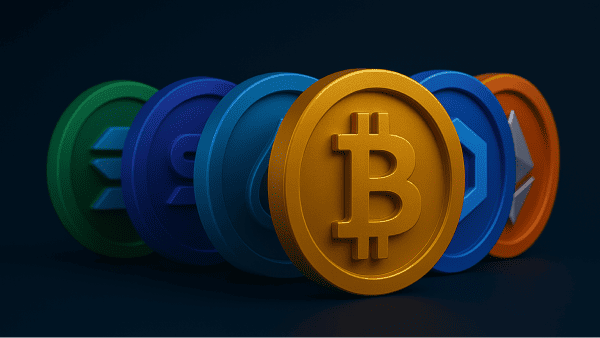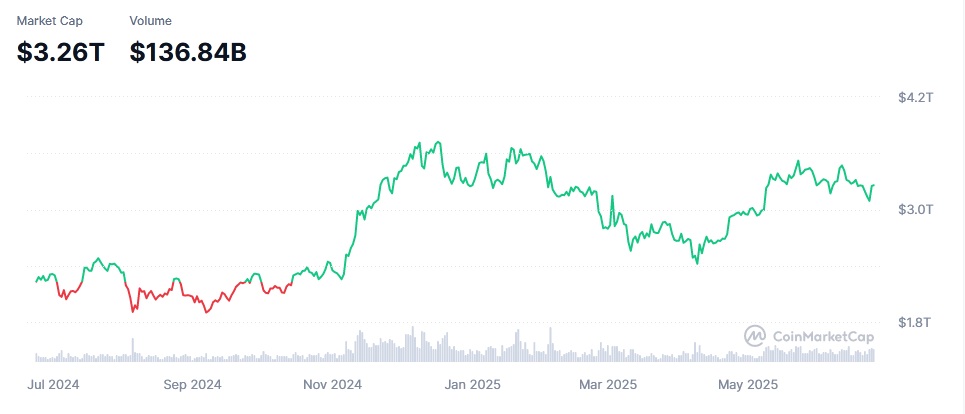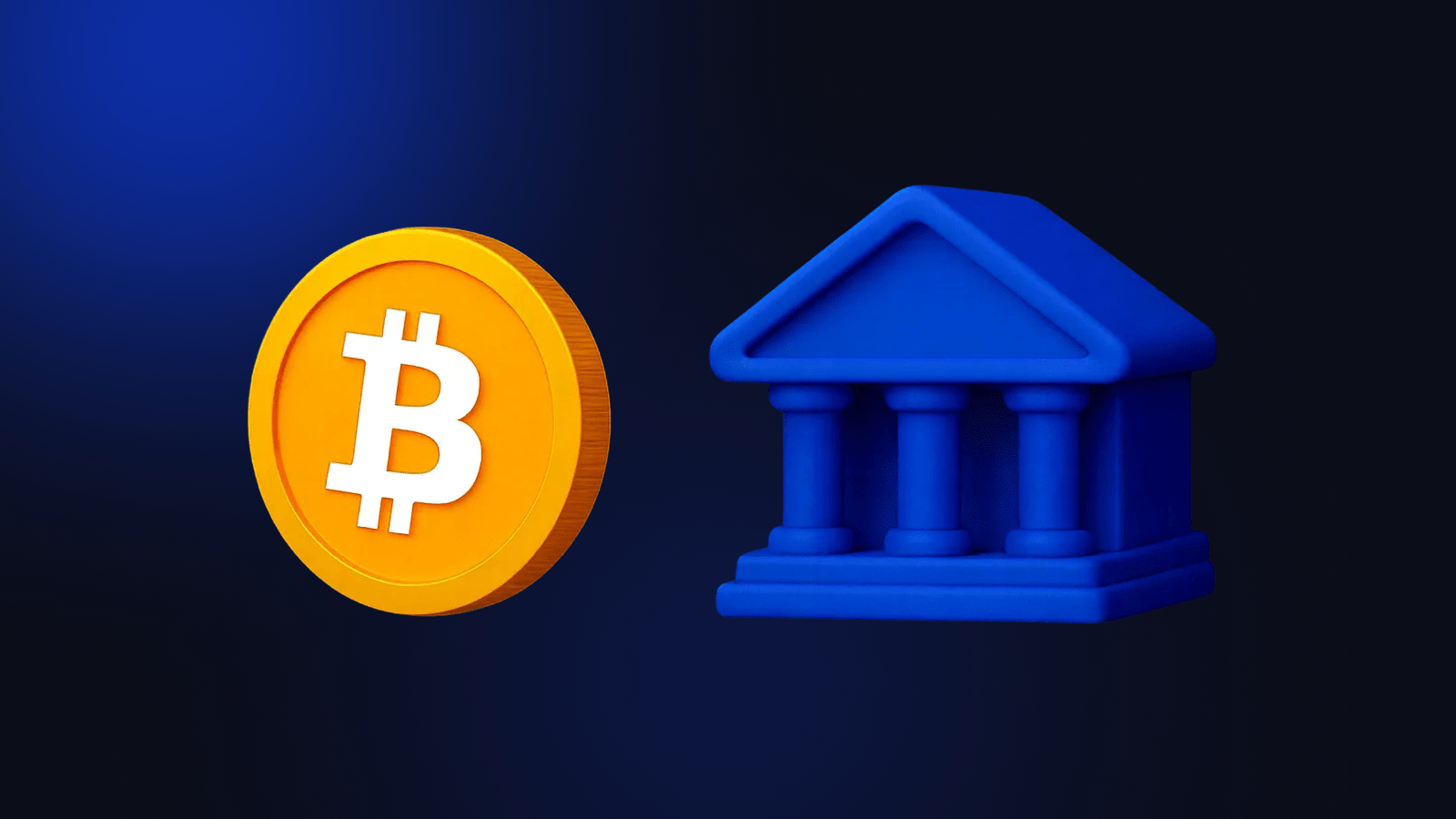Most interesting tokens of June July 2025

Top 10 Cryptocurrencies with High Potential in July 2025
Looking for the cryptocurrency with the most potential this summer? We’ve picked ten that deserve a closer look right now.
With thousands of crypto assets available, it can be overwhelming to decide which ones to invest in. In this article, we will highlight the best crypto to invest in July 2025, focusing on the top 10 cryptocurrency assets that have shown resilience and promise.
What are cryptocurrencies?
Cryptocurrencies are virtual currencies that use cryptography for security. Unlike traditional currencies issued by governments, cryptocurrencies operate on decentralized networks based on blockchain technology. This decentralization means that no single entity, such as a central bank, controls the issuance or value of a cryptocurrency.
How does cryptocurrency work?
Cryptocurrencies operate on decentralized networks using blockchain technology, which serves as a distributed ledger that records all transactions across a network of computers, or nodes. Unlike traditional currencies managed by central banks, cryptocurrencies rely on cryptography to secure transactions and control the creation of new units.
When a transaction is initiated, it is broadcasted to the network, where it is verified by nodes through consensus mechanisms like Proof of Work (PoW) or Proof of Stake (PoS). In PoW, miners compete to solve complex mathematical puzzles to validate transactions and add them to the blockchain, earning cryptocurrency as a reward. In PoS, validators are selected based on the amount of cryptocurrency they hold and are willing to "stake" as collateral, ensuring network security and transaction validation without the need for energy-intensive mining.
Cryptocurrencies are stored in digital wallets, which hold the private keys necessary to sign and authorize transactions. These wallets can be software-based or hardware-based, providing various levels of security and accessibility. Transactions are encrypted and recorded on the blockchain, ensuring their integrity and making it nearly impossible to alter past data, while maintaining a certain degree of anonymity for the participants.
Crypto market overview
The crypto market in late June 2025 demonstrates notable resilience, with a total market capitalization of $3.26 trillion. Bitcoin leads the market, trading around $105,400 and holding over 62% of the market share, while Ethereum follows at approximately $2,420. Market sentiment is mixed, but there are signs of optimism. Regulatory developments have shifted positively, with progress being made on stablecoin legislation. Institutional interest is robust, highlighted by over $400 million in inflows into crypto ETFs and a surge in venture capital funding reaching $18 billion. The stablecoin sector has reached a record $228 billion market cap, supporting increased trading activity. Meanwhile, the DeFi sector continues to expand. Despite these advances, challenges persist, including geopolitical uncertainties and limited Web3 adoption.

Top 10 best cryptos to buy now
What is the best cryptocurrency to invest in right now? Although it is impossible to give an exact answer to this question, it's still possible to highlight cryptocurrencies that have a good chance of growth in the long term. Here is our list of the top 10 cryptos to invest in July 2025.
Bitcoin (BTC)
Bitcoin is still the most important and structurally resilient cryptocurrency. As of late June 2025, it trades at around $106,000, maintaining a dominant market share of about 64 percent. The asset's resilience during periods of altcoin pullbacks has drawn increased institutional interest.
Recent on-chain data shows stable network usage, with over 250,000 transactions per day. Transaction fees have remained relatively low, reflecting improvements in Layer 2 solutions such as the Lightning Network. Developer activity around Bitcoin's sidechains and smart contract extensions has also continued, although adoption of these solutions remains limited compared to more flexible platforms.
Despite its limited use case compared to smart contract platforms, Bitcoin's strength lies in its unparalleled security, decentralization, and liquidity. Its role as a store of value and hedge asset keeps driving demand.
Key statistics (as of June 24, 2025):
- Price: $105,718
- Market cap: $2.1T
- All-time high: $109,114
Ethereum (ETH)
Ethereum continues to serve as the primary smart contract platform by usage and total value secured. Following the implementation of EIP-4844 (proto-danksharding), Ethereum has significantly reduced transaction costs and improved scalability. Its role as a settlement layer for rollups such as Arbitrum, Optimism, and Base positions it as the base layer of the decentralized internet.
Moreover, ETH has become deflationary due to EIP-1559's burn mechanism, making it more attractive as a store of value. Projects like EigenLayer and restaking innovations are creating new yield opportunities, and Ethereum's dominance in DeFi, DAOs, NFTs, and tokenized real world assets (RWAs) remains unchallenged. Although it faces growing competition from faster L1s and has to manage complexity arising from Layer 2 fragmentation, ETH is still one of the most institutionally respected digital assets.
Key statistics (as of June 24, 2025):
- Price: $2,442
- Market cap: $294.88B
- All-time high: $4,891
Solana (SOL)
Solana has shown strong performance in both user activity and developer engagement. The network processes over 65 million daily transactions, primarily driven by NFT trading, memecoins, and consumer-facing decentralized applications.
Transaction costs remain low, often less than $0.001, which has helped attract new projects and sustain high-frequency use cases. Solana's core infrastructure, including its proof-of-history mechanism and parallel transaction processing, enables higher throughput compared to most smart contract platforms. This has allowed the network to maintain high uptime and fast confirmation times even under peak load.
Major brands are exploring Solana Pay integrations. Technologically, Solana offers strong performance and a rapidly improving developer experience. With its growing adoption, Solana is increasingly seen as a serious alternative to Ethereum for dApps.
Key statistics (as of June 24, 2025):
- Price: $145
- Market cap: $77.11B
- All-time high: $294
Cardano (ADA)
Cardano takes a unique position in the market by emphasizing academic rigor and peer-reviewed development. While this has often led to slower delivery compared to competitors, the ecosystem is now showing signs of maturity. Cardano is one of the largest proof-of-stake networks by market capitalization and staked value.
Recent upgrades to Cardano's Plutus smart contract platform have improved script performance and lowered execution costs, making it more suitable for complex decentralized applications. Although overall DeFi activity on Cardano is smaller compared to Ethereum or Solana, it has been gradually expanding.
Cardano's Hydra scaling solution has reached production-stage deployment on several applications, enabling faster transaction processing through off-chain state channels. Meanwhile, the Voltaire phase focused on on-chain governance is progressing, with community testing for voting and treasury systems now underway.
While adoption growth has been gradual, the network maintains a strong base of long-term holders, active staking participation, and steady progress on its technical roadmap. These factors support Cardano's presence in the top tier of blockchain platforms.
Key statistics (as of June 24, 2025):
- Price: $0.58
- Market cap: $20.73B
- All-time high: $3.10
Sui (SUI)
Sui is a Layer 1 blockchain designed for high throughput and low-latency applications, built using the Move programming language. The network architecture, which uses a parallel execution model and object-based data structure, allows for improved scaling compared to traditional blockchain designs. This has led to growing activity from both new projects and teams migrating from other ecosystems. Daily transaction counts and unique active wallet numbers have shown steady increases since the beginning of Q2 2025.
Sui's development continues to be led by Mysten Labs, with regular updates focused on performance improvements and developer tools. The network's native staking mechanism remains active, offering rewards through a validator-delegator model. Liquidity for SUI has also improved, with broader exchange support and more DeFi integrations across Sui-native protocols.
While still a newer platform, Sui's technical design and growing ecosystem activity make it a project gaining attention from both users and builders in mid-2025.
Key statistics (as of June 24, 2025):
- Price: $2.78
- Market cap: $9.46B
- All-time high: $5.35
XRP (XRP)
XRP is the native asset of the XRP Ledger (XRPL), a permissionless payment protocol optimized for fast and low-cost cross-border transfers.
The XRPL consistently settles transactions in under five seconds with average fees well below one cent. These characteristics have made it suitable for remittance platforms and liquidity providers, particularly in regions with limited access to traditional banking infrastructure.
Following years of legal struggle with the SEC, XRP has largely cleared its regulatory overhang in the U.S. and is gaining traction among financial institutions focused on cross-border settlements.
Ripple, the primary developer of XRP-focused infrastructure, continues to sign partnerships with financial institutions, particularly in Asia, the Middle East, and Latin America. Meanwhile, developers are expanding XRPL's programmability through smart contract features designed to support more complex applications.
XRP's role in real-time settlement, along with active institutional engagement, keeps it relevant in the digital asset sector despite limited presence in DeFi or consumer-facing applications.
Key statistics (as of June 24, 2025):
- Price: $2.19
- Market cap: $129.17B
- All-time high: $3.84
Avalanche (AVAX)
Avalanche offers one of the fastest and most customizable blockchain frameworks, powering DeFi, NFTs, and enterprise apps. Its subnet architecture allows projects to deploy customizable chains, increasing developer flexibility.
Subnets have enabled projects to launch application-specific blockchains with customizable rulesets, allowing for better scalability and control. This model has attracted both Web3-native teams and traditional institutions exploring blockchain integration.
The Avalanche consensus mechanism delivers fast finality and relatively low fees, contributing to the platform's appeal among developers and financial applications. Cross-chain compatibility with Ethereum assets and tooling also allows for broader integration within the multi-chain ecosystem.
While Avalanche's total value locked remains below that of Ethereum or Solana, its focus on modular design and real-world use cases has positioned it as a viable option for projects seeking alternatives to general-purpose Layer 1 chains.
Key statistics (as of June 24, 2025):
- Price: $18.13
- Market cap: $7.65B
- All-time high: $146
Chainlink (LINK)
Chainlink still serves as the leading decentralized oracle network, providing external data to smart contracts across multiple blockchains. It has become a critical infrastructure layer for DeFi, and its services are expanding into gaming, insurance, and enterprise applications.
Data volume transmitted through Chainlink oracles continues to grow, with consistent usage across Ethereum, Arbitrum, Polygon, and Avalanche. Chainlink Automation (formerly Keepers) has also gained traction, enabling smart contracts to execute tasks based on time or event-based triggers without manual input.
LINK is actively used within the network for node incentives and as payment for services. The long-standing integration across protocols and the expanding use of Chainlink infrastructure beyond traditional oracles support its relevance in both existing and emerging blockchain applications.
As the demand for on-chain financial services grows, so does Chainlink's value proposition. Although LINK has underperformed at times due to being infrastructure-focused and slower to excite retail investors, it has strong long-term fundamentals.
Key statistics (as of June 24, 2025):
- Price: $13.35
- Market cap: $9.05B
- All-time high: $52.88
Polkadot (DOT)
Polkadot is a multichain network designed to connect independent blockchains through shared security and interoperability.
The network's architecture allows specialized blockchains (parachains) to operate in parallel, communicating via the shared Relay Chain. This architecture is particularly suited for modular application ecosystems, making it a natural candidate for enterprise and Web3 developers looking to avoid monolithic chains. Polkadot's model has attracted a range of use cases including identity management, asset transfers, privacy tools, and DeFi applications.
Although it has lagged in attention relative to Solana or Ethereum, Polkadot's core technology is robust and its relay chain design has demonstrated scalability and flexibility. Polkadot's adoption has been slower than some competitors, but its modular design and technical depth appeal to developers of the projects that require custom chain logic.
Key statistics (as of June 24, 2025):
- Price: $3.44
- Market cap: $5.48B
- All-time high: $55.00
How to choose the best cryptocurrency to invest in
Choosing cryptocurrency with the best potential requires careful consideration of several factors, given the volatile and complex nature of the cryptocurrency market. Here are key aspects to evaluate when selecting cryptocurrencies for investment:
- Market capitalization. Market cap is a fundamental metric that provides insight into the relative size and stability of a cryptocurrency. It is calculated by multiplying the current price of the cryptocurrency by its total circulating supply. Cryptocurrencies with higher market cap, like Bitcoin and Ethereum, tend to be more stable, making them more suitable for long-term investment. These assets are often seen as "blue-chip" cryptos, with a proven track record of performance and resilience in the market.
- Technology and use cases. The underlying technology and real-world use cases of a cryptocurrency play a significant role in its long-term viability. A cryptocurrency with innovative technology and practical applications is more likely to gain widespread adoption, leading to sustained growth. When evaluating a cryptocurrency, consider its technical features, scalability, security, and the problems it aims to solve.
- Community support and developer activity. A strong, active community and ongoing developer support are vital indicators of a cryptocurrency's potential for long-term success. A vibrant community ensures that there is interest and engagement around the project, which can lead to increased adoption. Similarly, consistent developer activity indicates that the project is continually improving, addressing security vulnerabilities, and staying competitive.
- Tokenomics. Evaluating token distribution, supply mechanisms, and economic incentives is very important. Projects with well-structured tokenomics that promote long-term value creation are generally more attractive than those with high inflation rates or overly concentrated token ownership.
- Security and audits. Reliable projects prioritize security. Independent code audits, bug bounty programs, and public disclosures about security practices can add credibility and reduce the likelihood of vulnerabilities.
- Regulatory environment. Be aware of the legal status of the cryptocurrency in different regions. Cryptocurrencies facing legal challenges or restrictions in major markets may pose higher risks.
- Historical performance. Analyzing the historical performance of a cryptocurrency can provide valuable insights into its potential future performance. While past performance is not a guarantee of future results, it can help identify trends, such as how a cryptocurrency responds to market cycles or external events.
By carefully analyzing these factors, investors can make more informed decisions and identify cryptocurrencies with strong potential for long-term growth.
How to invest in cryptocurrency
Investing in cryptocurrency involves buying crypto assets through exchanges or other means and storing them in secure wallets. Most users start by opening an account on a regulated exchange, completing identity verification, and funding the account with fiat currency or stablecoins.
Investors should assess the volatility and liquidity of each asset, review the underlying project fundamentals, and consider potential risks. Diversification across multiple assets can reduce exposure to single-token events, but the market remains both high-risk and high-reward compared to traditional investments.
faq quetstion
.svg)
Suggested Posts



YouHodler is regulated in Switzerland, the EU and Argentina.
YouHodler SA
Registered financial intermediary
YouHodler Italy S.R.L.
VASP registered at OAM / MICAR
YouHodler SA
Registered as VASP with Banco de España
YouHodler SA Branch in Argentina.
Registered as a VASP with the CNV.








